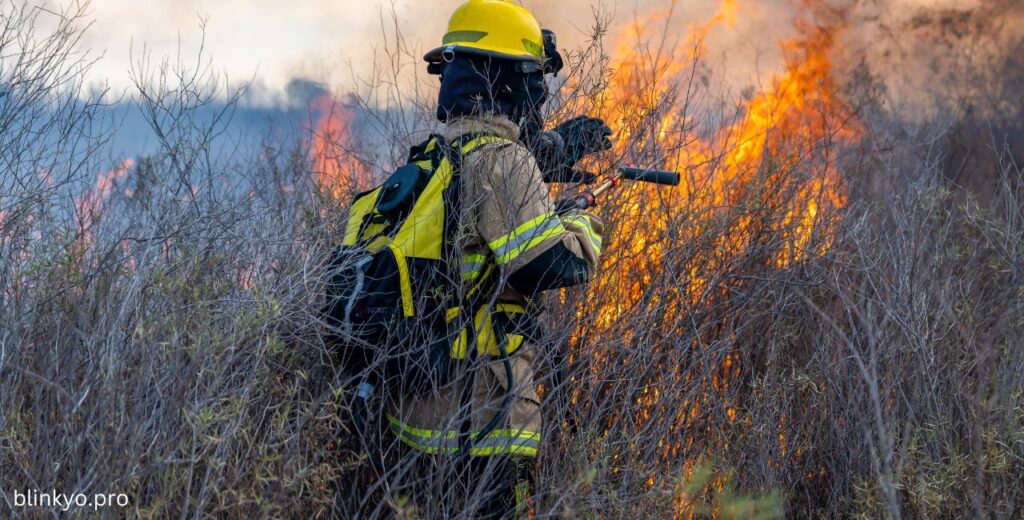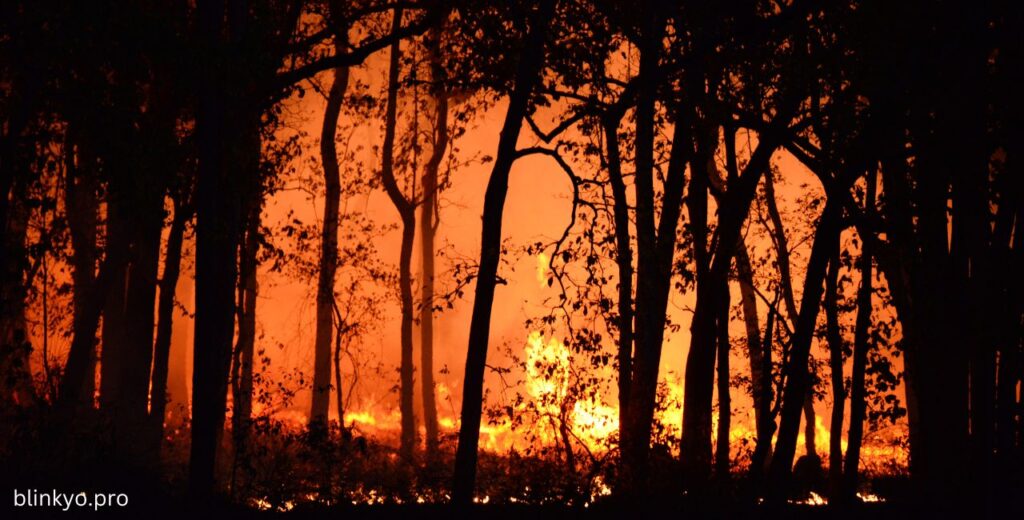Alerta De Bandera Roja (Clima Propicio Para Incendios)

In regions prone to wildfires, a robust system for predicting and managing fire risk is crucial for safeguarding communities and ecosystems. One of the most critical alerts in this system is the “alerta de bandera roja (clima propicio para incendios),” or Red Flag Warning. This alert signifies conditions that are highly conducive to the spread of wildfires, and understanding its implications can significantly reduce the risk of destructive fires. This article delves into the concept of the alerta de bandera roja, examining its meaning, preventive measures, impacts, and the role of technology and community in fire management.
What is a Alerta de Bandera Roja?
An “alerta de bandera roja (clima propicio para incendios),” or Red Flag Warning, is a notification issued by meteorological and fire management agencies when weather conditions are particularly favorable for the rapid spread of wildfires. This alert indicates that factors such as high winds, low humidity, and dry vegetation are present, creating an elevated risk of fire ignition and propagation. It is a critical tool for fire management agencies to communicate heightened risk to the public and prompt preparedness and precautionary actions.
Read Also: Tuambia Alimentos Cuba
Determine the Perfect Meaning
To fully grasp the significance of the alerta de bandera roja, it is essential to understand its components. The warning is based on specific weather criteria, which may include:
- Wind Speeds: High winds can carry embers and flames over long distances, facilitating the spread of fire.
- Humidity Levels: Low humidity reduces the moisture content in vegetation, making it more flammable.
- Temperature: High temperatures can dry out vegetation and accelerate the drying process.
The perfect meaning of this alert is not just about recognizing the immediate fire risk but understanding that it serves as a precursor to potential wildfire events. It emphasizes the need for increased vigilance and proactive measures to prevent fire incidents.
Preventive Measures During a Alerta de Bandera Roja
When an alerta de bandera roja is issued, several preventive measures should be implemented to mitigate the risk of wildfire:
- Avoid Outdoor Activities: Refrain from activities that could generate sparks, such as grilling, burning debris, or using machinery that can create heat or flames.
- Fire-Resistant Landscaping: Maintain defensible space around properties by using fire-resistant plants and removing dead vegetation.
- Proper Disposal: Ensure that all flammable materials are properly disposed of and avoid discarding cigarette butts or matches in areas where they could ignite a fire.
- Emergency Preparedness: Have an emergency kit ready, including essentials like water, non-perishable food, a flashlight, and important documents.
Impact on the Community and the Environment
The impact of an alerta de bandera roja extends beyond the immediate risk of fire. Its implications are far-reaching, affecting both communities and natural environments:
- Community Impact: High fire risk conditions can lead to evacuation orders, property damage, and economic loss. The stress and displacement of residents can have significant psychological and social effects.
- Environmental Impact: Wildfires can lead to habitat destruction, loss of biodiversity, and soil erosion. The aftermath of a fire can also result in water pollution as ash and debris enter water sources.
Understanding these impacts underscores the importance of heeding Red Flag Warnings and taking preventive actions to protect both people and the environment.
Read Also: chelsea acton famousparenting: Navigating Parenting with Poise and Wisdom
Understanding the Alerta de Bandera Roja or Red Flag Warning System

The Red Flag Warning System is a key component of wildfire management strategies. It involves the coordination between meteorological agencies, fire departments, and emergency services to monitor and communicate fire risks. The system is designed to:
- Assess Risk Levels: By analyzing weather data and vegetation conditions, agencies can assess the likelihood of fire spread.
- Issue Alerts: When conditions meet the criteria for high fire risk, alerts are issued to inform the public and prompt preventive measures.
- Coordinate Responses: Agencies use these warnings to coordinate fire management strategies and allocate resources effectively.
This system ensures that information about fire risk is communicated promptly and clearly, allowing communities to prepare and respond appropriately.
The Science Behind This Alert System
The Alerta De Bandera Roja (Clima Propicio Para Incendios) is grounded in scientific principles related to weather patterns and fire behavior. Key scientific factors include:
- Meteorology: Weather conditions such as wind speed, humidity, and temperature are critical in determining fire risk. Advanced meteorological models help predict these conditions and their potential impact on fire behavior.
- Fire Behavior Models: Scientists use fire behavior models to simulate how fires will spread under different conditions. These models incorporate data on fuel types, topography, and weather to predict fire progression.
Understanding these scientific elements helps improve the accuracy of fire risk predictions and enhances the effectiveness of the alert system.
Technology and Prevention
Advancements in technology play a significant role in enhancing fire risk management. Key technologies include:
- Remote Sensing: Satellites and drones provide real-time data on vegetation conditions, fire hotspots, and weather patterns.
- Early Warning Systems: Automated systems use weather data and fire behavior models to generate timely alerts.
- Fire Detection Systems: Advanced sensors and cameras detect smoke and flames, allowing for rapid response to emerging fires.
By leveraging these technologies, agencies can improve their ability to predict and manage fire risks, enhancing overall fire prevention and response efforts.
Read Also: Boston Celtics vs Dallas Mavericks Match Player Stats
The Importance of Education and Awareness for Alerta de Bandera Roja
Education and awareness are crucial components in managing fire risk. When communities understand the significance of the alerta de bandera roja (Clima Propicio Para Incendios), they are better equipped to take preventive measures and respond appropriately. Key aspects include:
- Public Education Campaigns: Programs that educate the public about fire risks, safety measures, and the meaning of Red Flag Warnings can increase community preparedness.
- Training and Drills: Regular training and fire drills help individuals and organizations practice emergency response procedures, ensuring readiness in the event of a fire.
Promoting awareness and education fosters a proactive approach to fire risk management, reducing the likelihood of fire-related incidents and enhancing community resilience.
Community Collaboration
Effective fire risk management requires collaboration among various stakeholders, including:
- Local Governments: Municipalities play a crucial role in implementing fire prevention policies and coordinating emergency responses.
- Fire Departments: Firefighters and emergency responders are on the front lines, working to control and extinguish fires.
- Community Organizations: Local groups and residents can contribute by participating in fire prevention programs and supporting community preparedness efforts.
Collaborative efforts ensure a comprehensive approach to managing fire risk, leveraging the strengths and resources of each stakeholder.
Adaptation and Mitigation for Alerta de Bandera Roja
Adaptation and mitigation strategies are essential for reducing fire risk and minimizing the impact of wildfires. Key strategies include:
- Land Use Planning: Implementing land use policies that consider fire risk can help prevent the development of properties in high-risk areas.
- Building Codes: Enforcing building codes that require fire-resistant materials and construction techniques can reduce the vulnerability of structures to fire.
- Vegetation Management: Regularly managing vegetation through thinning, clearing, and controlled burns can reduce fuel loads and lower fire risk.
By adopting these strategies, communities can enhance their resilience to fire risks and mitigate the potential impacts of wildfires.
Conclusion
The alerta de bandera roja, or Red Flag Warning, is a vital tool in managing fire risk and protecting communities and the environment from the devastating effects of wildfires. By understanding the meaning of this alert, implementing preventive measures, and leveraging technology, communities can better prepare for and respond to high fire risk conditions. Education, awareness, and collaboration are essential for effective fire management, fostering a proactive approach to reducing fire risks and enhancing community resilience. Through these combined efforts, we can work towards a safer and more sustainable future in the face of wildfire threats.




